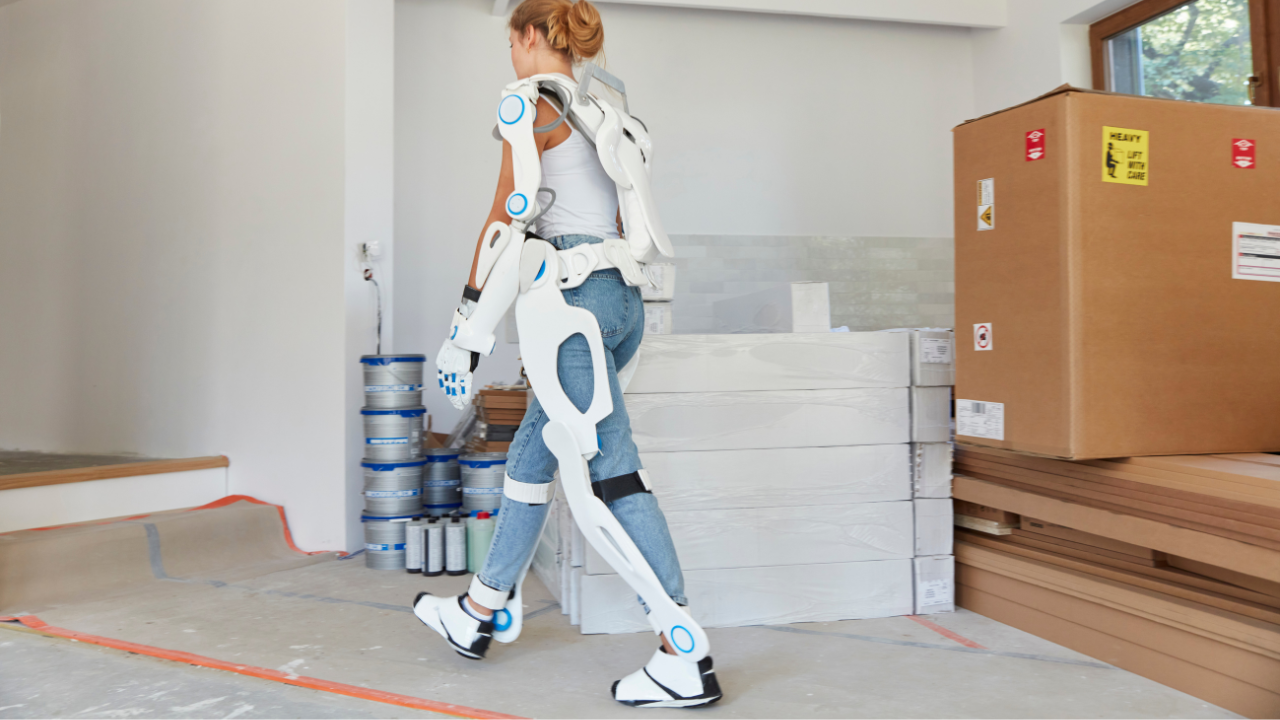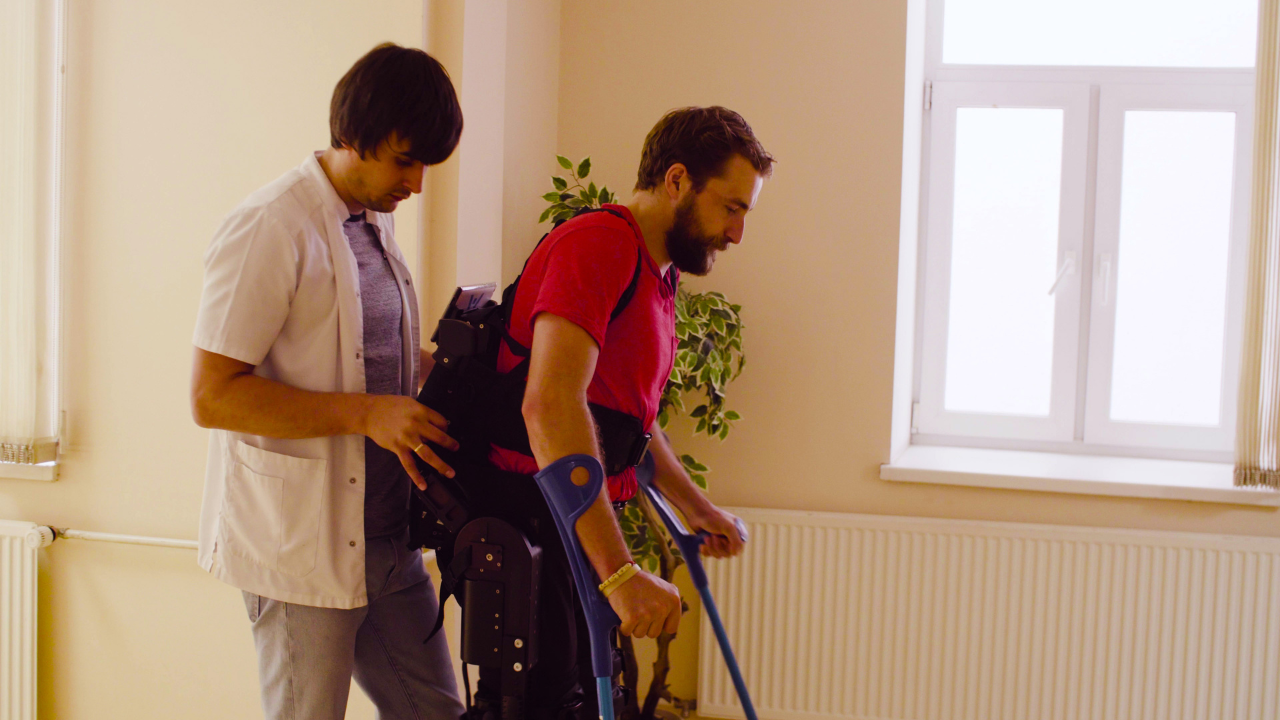Quick Answer
The rapid evolution of AI technology, assistive technology, and smart devices is revolutionizing support for people with disabilities. AI-enabled assistive technology in the NDIS enhances accessibility, independence, and safety by providing personalised, adaptive solutions. These innovations create new opportunities for NDIS participants, support coordinators, and providers to improve daily living and community participation through smarter, more efficient tools.
Introduction: A New Era of Support for NDIS Participants

The National Disability Insurance Scheme (NDIS) is continually evolving, driven by innovative developments in ai and assistive technology in NDIS. These advancements enhance independence, safety, and quality of life for participants. With the rise of ai technology, assistive technology, and smart devices, participants now experience more personalised support than ever before.
Understanding how these technologies fit within NDIS frameworks—along with funding pathways and safety considerations—is essential for participants, families, support coordinators, allied health practitioners, health professionals, and support teams.
Helpful references:
🔗 NDIS Assistive Technology Explained: https://www.ndis.gov.au/participants/assistive-technology-explained
🔗 NDIS Homepage (Official Site): https://www.ndis.gov.au/
🔗 Comprehensive Guide to Australia Disability Services
1. What Is Assistive Technology in the NDIS?
1.1 The Purpose of Assistive Technology
Assistive technology helps participants improve function, independence, and participation in daily life. This includes devices such as mobility aids, communication tools, environmental controls, and sensory supports. Assistive technology may be low cost, mid cost, or high cost, depending on complexity and risk.
1.2 Why Assistive Technology Matters
Assistive technology supports:
- Greater independence
- Enhanced community participation
- Safer environments
- Achievement of NDIS goals
- Increased confidence for both users and families
2. Categories of Assistive Technology

2.1 Low Cost Assistive Technology (Low Risk Items)
Low cost assistive technology includes items under $1,500 that are generally low risk. Participants can often choose these independently without complex assessments. Examples include:
- Smart-home devices
- Kitchen aids
- Adapted utensils
- Basic mobility tools
This category supports participants to start small, trial solutions, and build independence.
2.2 Mid Cost Assistive Technology
Mid cost items usually require supporting documents or assessment because they involve moderate complexity. This category may include:
- Communication devices
- Power-assist mobility tools
- Sensory systems
- Environmental controls
2.3 High Cost Assistive Technology (Higher Risk Items)
High cost technology involves greater complexity, risk, and safety considerations. Assessments from an occupational therapist or allied health practitioner are required. Examples include:
- Powered wheelchairs
- Complex communication devices
- Home automation systems
More details:
🔗 NDIS Assistive Technology Pricing: https://www.ndis.gov.au/providers/pricing-arrangements
3. AI Technology in Disability Support

3.1 Understanding AI Technology
AI technology refers to systems capable of analysing data, learning patterns, and making predictions or recommendations. These solutions can adapt to individual needs, making them highly effective for disability care.
3.2 Artificial Intelligence (AI) in NDIS Services
Artificial intelligence AI is transforming how supports are delivered. It enables:
- Personalised recommendations
- Automated scheduling
- Safety alerts
- Adaptive communication support
- Real-time insights for NDIS providers
AI’s ability to streamline operations also helps providers deliver safer, more efficient services.
4. AI Enabled Assistive Technology

4.1 Smart Tools Designed for Participants
AI enabled assistive technology combines traditional tools with intelligent adaptive capabilities. These systems are specifically designed to enhance communication, mobility, safety, and daily living.
Examples include:
- Predictive communication devices
- Smart mobility aids
- AI-powered home safety systems
- Learning-based behaviour tools
4.2 AI Tools for Communication and Speech Impairments
For participants with speech impairments, AI powered tools such as speech recognition or text-to-speech enhance social interaction, confidence, and daily communication. These tools also help participants connect with their family and maintain strong relationships, supporting social participation and well-being. These tools become more accurate over time by learning the user’s speech patterns.
4.3 AI Assistance in Daily Living
AI-supported daily living tools include:
- Automated lighting
- Voice-controlled environments
- Smart scheduling reminders
- Safety monitoring systems
These features strengthen independence and help reduce reliance on carers for routine tasks.
5. Smart Home and Environmental Control
Smart home and environmental control technologies are transforming the way NDIS participants manage their daily living and interact with their surroundings. With the support of the National Disability Insurance Scheme, participants can access a range of AI-powered tools that make everyday tasks more accessible and convenient.
Low Cost Assistive Technology
For example, low cost assistive technology such as smart plugs, automated lighting, and voice-activated lamps can be easily integrated into the home, allowing participants—especially those using mobility aids—to control their environment with simple voice commands or smartphone apps.
Support coordinators play a vital role in helping participants explore these technologies and ensure they are included in the NDIS plan as funded supports. By adopting smart home solutions, participants can enjoy greater independence, enhance accessibility, and participate more fully in their communities. These technologies not only improve quality of life but also support community participation by making it easier for individuals to manage their own space and routines.
6. Everyday Mainstream Tech
Everyday mainstream technology offers NDIS participants practical, low-cost solutions that can significantly enhance daily living and support capacity building. AI-powered tools like virtual assistants—such as Siri, Google Assistant, or Alexa—can help participants set reminders, send messages, and make calls, providing valuable support for those with speech impairments or mobility challenges.
Health professionals and support teams can guide participants in selecting and using these technologies effectively, ensuring they are tailored to individual needs.
In addition to low cost options, mid cost mainstream devices like tablets and smartphones open up access to a wide range of apps and AI-powered tools designed to support independence and help participants achieve their NDIS goals.
By leveraging these everyday technologies, participants can improve communication, manage daily tasks, and build essential life skills, all while keeping costs manageable and solutions accessible.
7. Linking Assistive Technology to Participant Goals

Connecting assistive technology to participant goals is essential for ensuring that each individual receives the right technology to support their unique needs and aspirations. Allied health practitioners and support coordinators work collaboratively to identify assistive technology solutions that align with the participant’s NDIS plan and personal objectives.
By focusing on the participant’s goals, preferences, and daily challenges, support teams can recommend mobility aids for those with physical impairments or communication aids for participants with speech impairments.
The Tailored Approach
This tailored approach ensures that NDIS providers deliver the most effective support, empowering participants to achieve greater independence and improve their quality of life. By making assistive technology an integral part of the participant’s plan, providers can help individuals reach their full potential and participate more actively in their communities.
8. Funding Assistive Technology Through the NDIS
8.1 NDIS Funding Pathways
Assistive technology is funded under:
- Capital Supports – Assistive Technology
- Capacity Building Supports
Funding depends on whether the solution is reasonable and necessary, supports NDIS goals, and aligns with participant needs.
8.2 Preparing a Strong Funding Request
A strong funding request outlines:
- Purpose of the technology
- Associated cost
- Risk and safety considerations
- Expected benefits
- Assessments and reports from professionals
- Training or setup needs
Relevant guide:
🔗 NDIS – How We Support Assistive Technology: https://www.ndis.gov.au/participants/assistive-technology-explained/how-we-support-assistive-technology — and for a comprehensive guide on accessing assistive technology through NDIS.
8.3 Documenting in the NDIS Plan
Participants must explain why the assistive technology should be included in their NDIS plan, how it supports goals, and why it is essential for daily function or safety.
It is important for participants to understand the documentation process and requirements to ensure successful inclusion of assistive technology in their NDIS plan.
9. Gathering Evidence and Justification

Gathering robust evidence and justification is a critical part of the NDIS planning process when requesting assistive technology. Support coordinators and health professionals assist participants in compiling the necessary documentation, which may include assessments from allied health practitioners, detailed quotes from providers, and trial reports from support teams.
This comprehensive evidence demonstrates the benefits and cost-effectiveness of the requested assistive technology solutions.
NDIS Providers
NDIS providers rely on this information to make informed funding decisions, ensuring that participants receive the most suitable support for their needs. Staying informed about the latest NDIS guidelines and updates on the official site is essential for all involved, as it helps streamline the evidence-gathering process and ensures compliance with current requirements.
By presenting clear, well-documented evidence, participants can strengthen their case for funding and access the technology that will make a meaningful difference in their lives.
Submitting and Choosing Providers
Selecting and Submitting to the Right Providers
Selecting and submitting to the right providers is a crucial step in the NDIS process for accessing assistive technology. Support coordinators guide participants through the process, helping them identify NDIS providers who offer high-quality, cost-effective solutions that align with their individual needs and NDIS goals. When choosing providers, it’s important to consider factors such as cost, service quality, reputation, and compliance with NDIS data privacy regulations.
Adherence to Guiding Principles and Collaboration
NDIS providers must adhere to the scheme’s guiding principles, ensuring that all support and technology solutions are delivered ethically and in line with participant preferences. By working closely with support teams and understanding the funding and support processes, participants can make informed decisions and secure the best possible outcomes. This collaborative approach ensures that assistive technology is not only accessible but also tailored to help participants achieve their goals and enhance their quality of life.
Cost Considerations for Assistive Technology
Total Cost of Ownership
When choosing technology, participants and support teams must consider:
- Maintenance
- Repairs
- Upgrades
- Training
- Replacement intervals
Evaluating Benefits vs Cost
The priority is selecting the right technology, focusing on long-term value rather than price alone. Solutions should balance usability, durability, and future adaptability.
AI Systems Supporting Daily Living & Community Participation

AI in Daily Living
AI can improve quality of life through:
- Predictive reminders
- Routine management
- Automated home controls
- Smart safety alerts
Some AI tools also focus on improving concentration and task management for users with learning difficulties, ADHD, or other cognitive challenges.
AI for Community Participation
AI supports community participation by enabling:
- Navigation assistance
- Real-time translation
- Safety monitoring
- Learning tools
- Communication support
These systems help participants engage more confidently and independently within their communities.
Enhancing Accessibility Through AI

AI Tools That Enhance Accessibility
AI contributes to accessibility through automated captions, audio description, adaptive communication boards, and smart learning systems. These tools empower participants to access information, environments, and opportunities with greater ease.
Innovation in Disability Care
Technology and innovation continue to expand what’s possible for participants with disabilities, creating new pathways to independence, safety, and participation. Recent innovations in disability care, mobility solutions, and assistive technologies are driving these advancements, making accessibility and independence more achievable than ever.
Potential Challenges and Safety Considerations
Data Privacy and Ethical Use
AI tools often rely on sensitive data, which raises concerns around data privacy. Participants, families, and providers must ensure:
- Secure platforms
- Clear consent
- Ethical usage
- Compliance with NDIS guidelines
More guidance:
🔗 NDIS Privacy: https://www.ndis.gov.au/privacy
Risk Levels and Safe Use
Different technologies pose different risk levels. Low risk items are easier to trial, while higher risk items require assessments and training. It is important to assess potential risks associated with AI-enabled assistive technologies to ensure safety and effectiveness. Providers must ensure safe implementation and ongoing monitoring.
Potential Bias in AI Systems
AI tools may unintentionally reflect bias based on the datasets they are trained from. Understanding these limitations helps ensure fair and inclusive support.
AI in Residential Aged Care
Enhancing Aged Care Support
In residential aged care, AI assists with medication reminders, fall detection, environmental control, and communication. It also supports older participants who need more structured routines.
Improving Provider Efficiency
AI helps providers streamline operations by automating scheduling, offering predictive insights, and improving service delivery.
Staying Informed About New Technologies
Importance of Staying Updated
Technology evolves quickly. NDIS (National Disability Insurance Scheme) providers, support coordinators, and professionals must stay informed by reviewing the official site, attending training, and learning about new developments.
Commitment to Guiding Principles
Staying updated ensures services remain aligned with NDIS guiding principles, participant choice, and safe, ethical technology use.
Conclusion: A Future Built on Empowerment and Innovation

The integration of ai and assistive technology in NDIS is shaping a future where technology supports greater independence, accessibility, and freedom for participants. To ensure responsible and effective adoption, it is essential to create a robust framework and develop resources that guide the development and implementation of AI-enabled assistive technologies. Such frameworks and resources help stakeholders assess risks and benefits, support innovation, and provide clear pathways for safe and ethical use within the NDIS sector.
Framework for Responsible Adoption
Through thoughtful planning, professional guidance, and adherence to safety principles, participants can unlock the full potential of AI, assistive tools, and innovative solutions.
Pathway to Empowerment
With the right approach, assistive technology becomes more than just equipment—it becomes a pathway to confidence, empowerment, and meaningful progress in daily life and community participation.
Support from Re.Connect Support Services

Re.Connect Support Services is dedicated to helping NDIS participants navigate these advancements by providing expert guidance, personalised support, and access to the latest assistive technologies. Their commitment ensures participants receive the right solutions tailored to their needs, fostering independence and enhancing quality of life.


